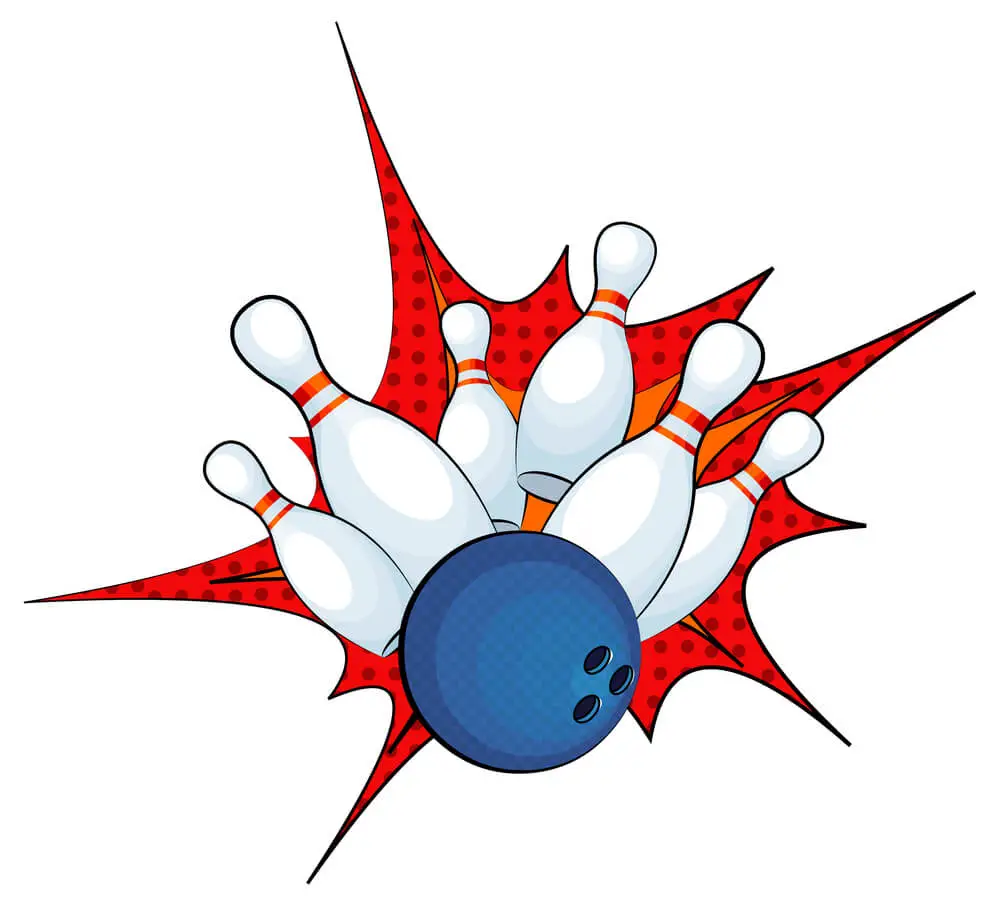There are many different rules for bowling, depending on the type of bowling you are playing. But in general, there are a few basic rules that all bowlers should follow.
First, always make sure you are bowling on the correct lane. The foul line is the dividing line between the playable and non-playable areas of the lane. You must start by standing behind the foul line and then you may move on the lane after your ball has been delivered.
Another important rule for bowling is to always avoid interfering with someone else’s turn. Do not talk while another person is bowling, and do not stand in their way or otherwise hinder them from getting a clear shot at the pins.
If you do not step out of the way in time, and someone bowls into you, this is considered a foul and will result in a penalty.
Finally, make sure you know the weight and size of the ball you are using. The weight of the ball should be appropriate for your height and strength, and the size should fit comfortably in your hand. If you are not comfortable with the ball, you will not be able to bowl well.
How many rounds are there in bowling?
There are usually 10 to 16 rounds in bowling, depending on the type of bowling.
How many pins do you need to knock down for a strike?
The answer is 10 pins. If you knock down all 10 pins with your first or only ball, it’s considered a “strike.” To do so, one must aim shooting for the head pin and taking down the rest in one go.
What are the rules for bowling?
10 basic rules that should be followed when playing most types of bowling:
1. A general rule is to always start behind the foul line when moving the ball up. This is also called legal delivery. Only a delivered ball counts toward points. Don’t talk while someone else is bowling/standing in their way; avoid interfering with other players’ turns by standing out of their way; use weight and size appropriate for height and strength; know the weight and size of the player bowls before playing.
2. There are usually 10-16 rounds in bowling, depending on the type of game being played;
3. A “strike” is when a player knocks down 10 total pins with the first/only ball. Each downed pin can give you an additional point.
4. In order to get a strike, a bowler knocks down the correct pins with enough force so that all 10 pins fall. There must be no standing pin remaining.
5. If there are remaining pins after the first ball (called a spare), then the player gets extra throws to knock them all down–this is also known as an “extra ball;”
6. Bowling has different types of games and scoring systems, so it’s important to be aware of these before playing. The total number of pins is also important.
7. Most importantly, have fun and enjoy bowling with friends! It’s a great way to spend an afternoon or evening.
8. For more information on the rules of bowling, visit the website of your chosen league or organization;
9. There may be some variations in the rules depending on the location or type of bowling being played, so it’s always best to ask an expert if you are unsure about something;
10. Lastly, remember to always be respectful of your fellow bowlers and follow the rules set forth by the game. Happy bowling! 🙂
Exploring the Dynamics of League Play
League play adds an extra layer of excitement and competition to the bowling experience, bringing together teams of enthusiastic bowlers to vie for victory. Team rosters are carefully crafted, with each member contributing their unique skills and strengths to the collective effort. The team captain assumes a pivotal role in guiding their teammates, fostering camaraderie, and strategizing for success on the lanes. Throughout the weeks of play, teams compete head-to-head, striving to outscore their opponents and climb the ranks in pursuit of the highest point total. As the season progresses, league bowlers forge lasting bonds, celebrate milestones, and revel in the thrill of competitive play.
Navigating Lane Etiquette and Sportsmanship
In the fast-paced environment of league play, adhering to proper lane etiquette and demonstrating good sportsmanship are essential for fostering a positive and inclusive atmosphere. Bowlers must exercise caution to avoid fouls such as stepping over the foul line or bowling on the wrong lane, which can result in penalties and impact individual scores. Additionally, respecting the integrity of the game means acknowledging the achievements of fellow bowlers, offering congratulations for impressive shots, and maintaining a gracious attitude in both victory and defeat. By upholding the principles of sportsmanship and fair play, league bowlers contribute to a welcoming and supportive community where everyone can enjoy the thrill of competition.
Ensuring Fair Play and Integrity
The integrity of the game lies at the heart of competitive bowling, emphasizing honesty, respect, and fair play among all participants. League bowlers must maintain the highest standards of sportsmanship, refraining from actions that may compromise the integrity of the competition. Any violation of this rule, whether intentional or unintentional, undermines the spirit of fair play and may result in penalties or disqualification. As such, league members are encouraged to exhibit good sportsmanship both on and off the lanes, fostering a welcoming and inclusive environment where every bowler can enjoy the thrill of competitive play.
Addressing Mechanical Challenges and Lane Conditions
Despite the meticulous maintenance efforts of bowling alley staff, mechanical problems and lane conditions can occasionally disrupt league play. From malfunctioning pinsetters to lane irregularities caused by foreign material, these challenges require swift resolution to ensure a smooth and uninterrupted gaming experience. Bowling establishment staff members work diligently to address any issues promptly, employing specialized equipment and expertise to restore normal conditions on the lanes. By prioritizing the integrity of the game and the satisfaction of league bowlers, bowling alleys uphold their commitment to providing a premium gaming environment for all participants.
Embracing the Spirit of Tournament Play
Tournament play represents the pinnacle of competitive bowling, offering bowlers the opportunity to showcase their skills on a grand stage and vie for prestigious titles and prizes. Whether competing in local, regional, or national tournaments sanctioned by organizations like the United States Bowling Congress (USBC), bowlers must adhere to official rules and regulations to ensure fair and equitable competition. The playoff format may vary, with bowlers competing individually or as part of a team in single-elimination or round-robin matchups. As the pressure mounts and the stakes rise, bowlers must summon their skill, focus, and determination to rise to the occasion and achieve success in tournament play. Try looking up the current season of USBC to join in the event!
Mastering the Art of Competitive Play
Bowling is not just a recreational activity; it’s a competitive sport that demands skill, strategy, and determination. In league play, bowlers compete not only against their own individual scores but also as part of a team, where every player’s contribution counts toward the total team score. Each bowler throws their best shots, aiming for the maximum score of 300 and striving to achieve the highest scores possible. As the game progresses into the tenth frame, the pressure mounts as bowlers contend with the possibility of other players knocking down pins or securing additional points. Amidst the intensity of league competition, adhering to league rules and demonstrating good sportsmanship is paramount, ensuring fair play and a positive experience for all participants.
Navigating the Rules and Regulations
Bowling leagues operate under official rules and regulations set forth by governing bodies such as the United States Bowling Congress (USBC). A regular season of the USBC competition is usually a big affair, which is why having a sportsmanship policy is important. These rules govern every aspect of the game, from the game start requirements to the calculation of the total game score. The organization also promotes removing gender requirements for tournaments, setting most of them as Open competitions.
Each player must adhere to the league rules, including wearing proper bowling shoes and abstaining from the application of any foreign substance to the surface of the ball. Putting a foreign object under your shoes such as talcum powder is also not allowed. Failure to comply with the official rules may result in penalties, affecting both individual scores and team standings. Therefore, it’s essential for league members to familiarize themselves with the official rulebook and uphold the integrity of the game at all times.
Embracing the Spirit of Community
Beyond the competitive aspect, bowling leagues foster a sense of community and camaraderie among participants. Whether it’s cheering on teammates, celebrating victories, or consoling each other in defeat, league bowlers form bonds that extend beyond the lanes. Team names become synonymous with camaraderie and team spirit, while league members support each other through the highs and lows of the season. Ultimately, it’s this sense of belonging and shared passion for the game that keeps bowlers coming back week after week, forging friendships that last a lifetime.
Maximizing the Bowling Experience
As bowlers immerse themselves in the world of league play, they discover the myriad joys and challenges that come with competitive bowling. From the thrill of scoring a strike in the tenth frame to the satisfaction of achieving a personal best, every moment on the lanes is an opportunity for growth and achievement. By embracing the rules, embodying good sportsmanship, and fostering a sense of community, league bowlers maximize their bowling experience, creating memories that endure long after the final frame has been bowled.
Understanding the Role of the Field Manager
In league play, the field manager is a staff member who plays a crucial role in overseeing the smooth operation of bowling matches. From ensuring that all players adhere to the league rules to resolving disputes and maintaining a fair and competitive environment, the field manager’s responsibilities are varied and demanding. They are tasked with recording each player’s scores accurately on the score sheet, including any dead ball situations or downed pins that may affect the outcome of the next game. A dead ball happens for a variety of reasons, including when a human pinsetter removes a downed pin while the ball is still rolling. It also happens when opposite teams on a pair of lanes bowl on the wrong side.
Additionally, the field manager coordinates with league officials to enforce the league fee collection and registration of players, ensuring that any missing player is accounted for and that the rostered player is eligible to compete. Late registration may be allowed although there is usually an additional fee involved. An unregistered player is not allowed to join. In cases of emergency, absent players are scored their average with ten pins deducted. A substitute bowler may play in place of the absentee but the score is credited to the first player.
Strategizing for Success in the Next Frame
As bowlers progress through each frame of the game, strategic decision-making becomes increasingly important in maximizing their scores. After knocking down the first ball of a frame, players must anticipate their second strike based on the previous frame and the positioning of the pins in the next frame. This strategic approach involves calculating the potential score gains from spare conversions, as well as the risk-reward trade-offs of aggressive plays to secure strikes. By carefully considering these factors and adapting their gameplay accordingly, bowlers can optimize their performance and increase their chances of achieving the highest scores possible. In the dynamic game of bowling, every frame presents a new opportunity for players to showcase their skill and strategic acumen, driving them closer to victory with each well-executed throw.
Fostering Team Play and Collaboration
While bowling is often perceived as an individual sport, league play emphasizes the importance of teamwork and collaboration among players. In team-based formats, such as doubles or triples matches, bowlers must work together to coordinate their efforts and support each other’s success against the opposing team. This collaborative approach extends beyond the lanes, as teammates provide encouragement, offer advice, and celebrate achievements together. Team play enhances the overall bowling experience by fostering camaraderie and unity, creating lasting memories and strengthening bonds among teammates. Whether competing for a league championship or simply enjoying a friendly match, the spirit of teamwork adds depth and richness to the sport of bowling, enriching the lives of participants and spectators alike.
How long is a bowling lane?
A bowling lane is typically 60 feet long. However, there may be variations depending on the location.
What is the foul line in bowling?
As an official rule, the foul line is the dividing line between the playable and non-playable areas of the bowling lane. Always make sure you stand behind it before delivering your ball.
How do you keep score in bowling?
There are a few different ways to keep score in bowling, including the ten-pin system and the candle system, which are both decided by the resulting pinfall. In the ten-pin system, which is used in most professional tournaments, a strike counts as 10 points, while spare counts as 1 point. A “perfect game,” when all strikes are thrown in succession with no misses, is 300 total points (or 30 X 10). The candle system uses 9 pins for scoring: 1 point for each pin knocked down on the first ball, 2 points for knocking down all 9 pins on the second ball, and 3 bonus points if you manage to knock them all down again on your third and final throw. There is also a variation of this called “Canadian.” These numbers are tracked with the provided score cards.
What are the terms used in bowling?
“Foul line,” “an open frame,” “the pit,” etc. There are many terms used in bowling to indicate different types of things, so it’s important to know these when visiting your local alley or bowling league.
What is a perfect score in bowling?
A perfect score in bowling is 300 points. In such case the bowler has knocked down all 10 pins with every roll. It’s very difficult and usually only occurs during professional tournaments (or if you’re an incredibly skilled amateur). The average score for amateur play is usually around 200.
What do you need to bowl?
In order to bowl, individual players must have a ball, shoes, and a lane. However, most alleys also provide supplies such as tools for cleaning your ball and equipment for keeping score in a single game.
How many people can play at once?
Some lanes can accommodate up to six people at one time; often, games are played between teams of two or three scored bowlers each, with a minimum number of players. Unregistered substitutes do not count.
How long does a bowling game last?
The posted game time for bowling typically lasts around 2 hours, but this can vary depending on the type of game being played and the number of participants.
How to properly pick up a bowling ball?
Bowling balls can be difficult to lift, as they are often quite heavy. In order to avoid injury it’s important not to bend over from the waist or jerk back suddenly when you attempt to pick up a ball. Instead, try reaching down from behind and grasping the ball from either side–then stand up straight while continuing to hold it against your chest. It is also generally advised to start with your dominant hand. You may also want to try using a ball carrier or strap to make transporting the ball easier.
Now that you know some of the basics about bowling, it’s time to head to your nearest alley and give it a try! Bowling is a great way to spend time with friends and family, and it’s a fun way to get some exercise too. So grab your ball and shoes, and have a good time! 🙂





